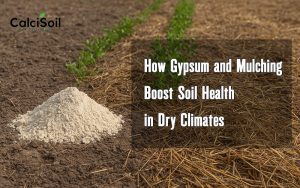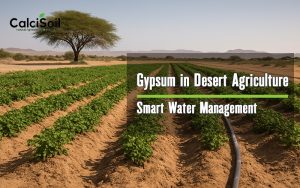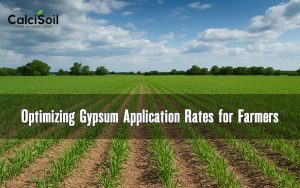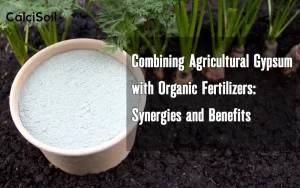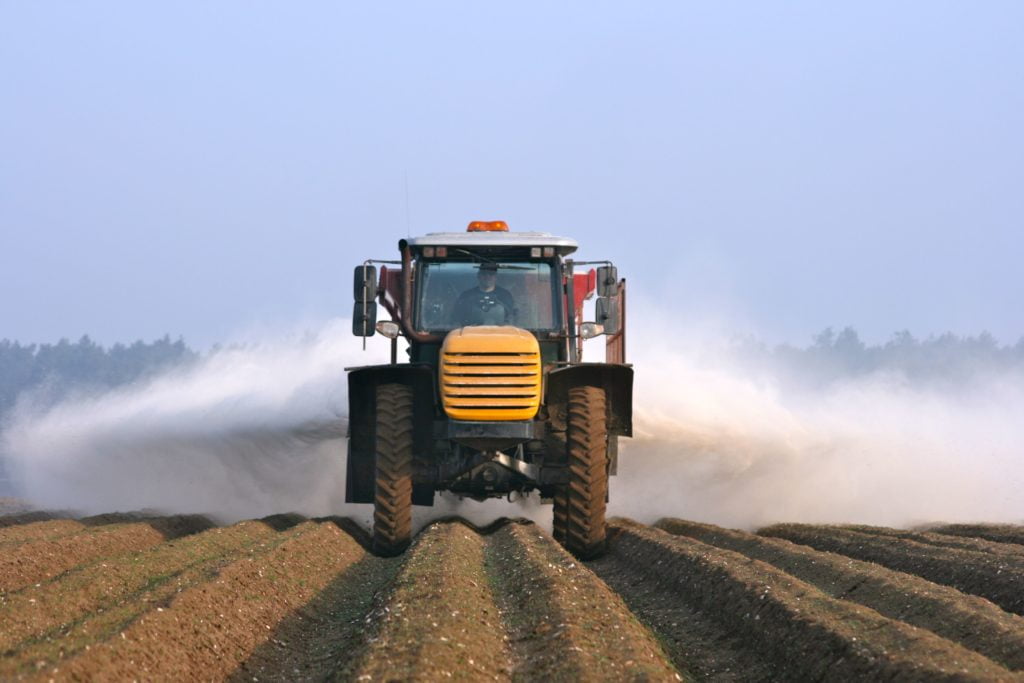
Applying agricultural gypsum rules
When and how to apply agricultural gypsum
Applying agricultural gypsum is a crucial practice for improving soil conditions and enhancing crop yields. As with other soil amendments, the timing of gypsum application plays a significant role in its effectiveness. It is generally recommended to apply gypsum during periods of plant dormancy, particularly in the autumn or winter months.
This timing allows the gypsum to integrate into the soil without interfering with active plant growth. However, under suitable conditions—such as adequate moisture—gypsum can be applied in any season throughout the year. Its moderate solubility and relatively low salinity mean that it does not contribute to soil salinity when applied during the growing season of plants, making it a versatile amendment.
Gypsum can be applied in several ways, depending on factors such as its form (pulverized or granular), purity, the intensity of soil sodicity, and the depth of soil that needs treatment. The primary methods for applying gypsum include:
- Dissolved in Irrigation Water: This method allows for even distribution and immediate availability of gypsum to plants.
- Broadcasted on Soil Surface: Gypsum can be spread over the surface without incorporation into the soil, although this method may be less effective.
- Mixed into Soil: Gypsum can be mixed with surface soil (up to 10 cm deep) through disking or incorporated into deeper layers (up to 30 cm) by plowing.
Important Considerations for Application
Several important points should be taken into account when applying agricultural gypsum:
- Broadcasting and Mixing: In most cases, especially in soils with moderate sodicity levels, it is advisable to broadcast gypsum on the soil surface and then mix it into the upper layer (maximum depth of 10 cm) using disking or plowing techniques. This mixing enhances the efficiency of gypsum application compared to simply broadcasting it on the surface.
- Depth of Mixing: Mixing gypsum at shallower depths often yields better results than applying it at greater depths, particularly when the application rate is not optimal. This is especially true for lands under crop cultivation where root systems are concentrated near the surface.
The most effective method for applying gypsum can vary based on several factors, including:
- Soil Type: Different soils react differently to amendments based on their texture and composition.
- Soil pH: The acidity or alkalinity of the soil can influence how well gypsum performs.
- Crop Needs: Specific crops may have unique requirements that dictate how and when gypsum should be applied.
In some scenarios, applying gypsum directly to the crop row or injecting it into the soil at a specific depth may prove more beneficial. Consulting with a soil or crop expert can provide valuable insights into determining the best application method tailored to specific agricultural situations.
Application Rates and Guidelines
The recommended application rates for agricultural gypsum can vary significantly depending on various factors such as crop type, soil properties, and specific agricultural goals. Here are some general guidelines:
- For field crops, if the calcium-to-magnesium (Ca:Mg) ratio is less than 1.5, an application rate of approximately 6 tons per hectare (t/ha) is suggested. For ratios between 1.5 and 2.0, a reduced rate of 4 t/ha is appropriate.
- In horticulture (including trees, vines, and vegetables), higher rates may be necessary; for instance, applying 7.5 to 10 t/ha for a Ca:Mg ratio below 1.5.
For optimal results, conducting a soil analysis prior to application is recommended. This analysis should include measurements of cation exchange capacity (CEC), calcium levels, magnesium levels, pH, and phosphorus content.
Conclusion
In summary, applying agricultural gypsum effectively requires careful consideration of timing, method, and application rates tailored to specific conditions. By following best practices and consulting with experts when necessary, farmers can enhance soil quality and improve crop performance through judicious use of this valuable amendment.


